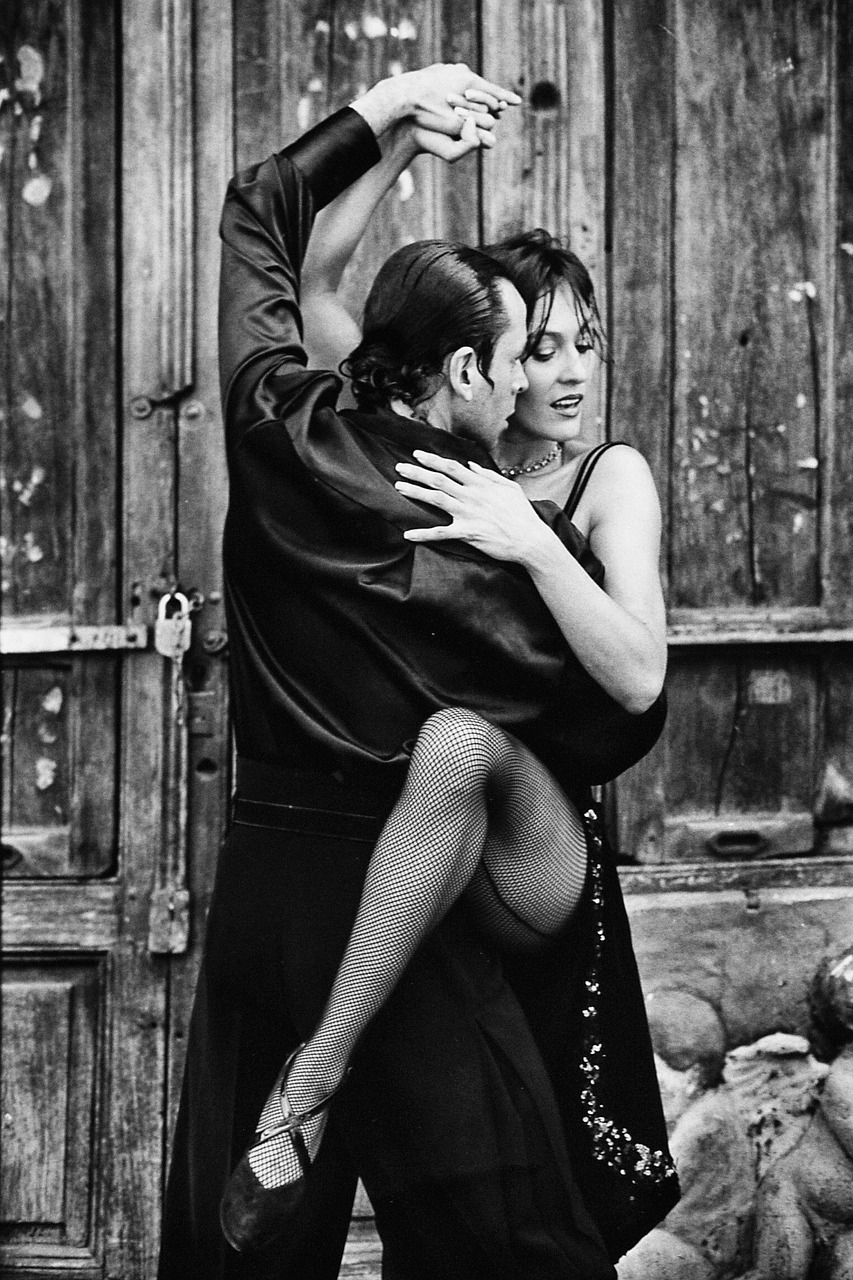The Argentine Tango Embrace

In Argentine tango, the dancers’ chests are closer to each other than their hips are, and sometimes there is gentle contact around the level of the chest (the contact point differs depending on the height of the leader and the follower and the closeness of the embrace). In close embrace, the leader and the follower’s chests are in gentle contact and they are dancing with their heads softly touching or very near each other. In open embrace, there can be as much space as desired between the partners, however there should always be complete contact along the embracing arms to ensure proper communication. Since Argentine tango relies heavily on improvisation, it is important that there is clear communication between partners. Even when dancing in open embrace, Argentine tango dancers never hold their upper bodies arched away from each other as in ballroom dancing.. Whether dancing in open or closed embrace, an argentine tango embrace is not rigid, but relaxed. It should feel like a hug.
No dance connects the two dancer partners more closely than the Argentine tango, both emotionally and physically. Part of this is the dance position. The two partners dance almost cheek to cheek and also keep their arms around each other for the entire dance.
Take your partner in a standard dance position. Keep the upper body straight, both partners should shift their weight onto the balls of their feet. This will push the two partners very lightly together, helping connect the two of you into a couple.
If you’re the leader, pull your partner (the follower) toward you with your right hand behind their back. If you’re the follower, place your left hand on your partner’s upper arm just above his biceps and push against him. Both pull and push should be as gentle as you can make them and still remain firm.
Extend the other arm (the woman’s right, the man’s left) to the side in the usual ballroom manner. Do not let the arm sink down, or flop around loose like a piece of string. Instead press lightly against your partner’s hand and clasp it.
It’s good to practice this embrace position dancing with an imaginary partner with your arms and hands properly placed. This strengthens the muscles and habits so that you can keep a good frame without thinking about it.
Now try walking in the Line of Dance with your (real or imaginary) partner, the leader facing forward along the line of dance, the follower facing backwards. Do this first without music, trying just to keep a good embrace connection with your partner. Keep the head up and turned just slightly to the side, staying aware of your surroundings as well as your partner. Then turn in the opposite direction and walk some more along the line of dance, the man walking backward and the woman forward. Finally, play some argentine tango music and walk around the room to the beat of the music.
The Argentine tango is danced in an embrace that can vary from very open, in which the dancers connect at arms length, to very closed, in which the connection is chest-to-chest, or anywhere in between.
Abrazo Cerrado – V-shape close embrace
The dancers’ chests are closer to each other than their hips, and often there is contact at about the level of the chest (the contact point differing, depending on the height of the leader and the closeness of the embrace). In close embrace, the leader and the follower’s chests are in contact and they are dancing with their heads touching or very near each other.
Abrazo abierto – Open embrace
In open embrace, there can be as much space as desired between the partners, but there should always be complete contact along the embracing arms to give optimum communication. Argentine tango dancers do not hold their upper bodies arched away from each other; each partner is over their own axis. Whether open or closed, a tango embrace is not rigid, but relaxed, like a hug.
Apilado – Estilo Milonguero – Square Close Embrace
The Milonguero style of embrace is danced in closed position, chest-to-chest, with the partners leaning – or appearing to lean – slightly toward each other to allow space for the feet to move. Close embrace, no V-shape.
Tango al Reves – Doble Frente – Reverse embrace
Reverse embrace where both partners face the same direction; it is used only occasionally to perform tango figures



